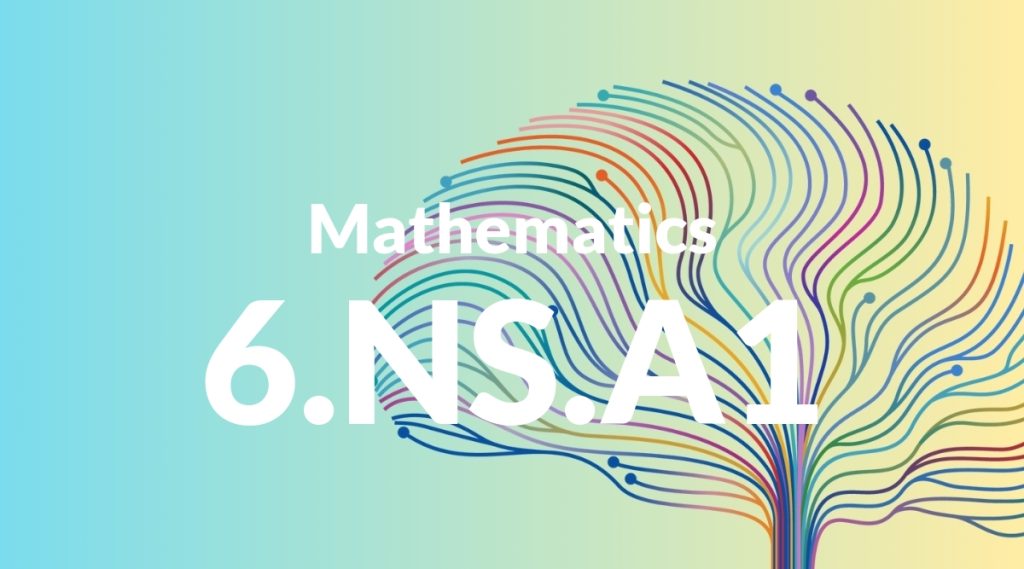Standard: 6.NS.A1 – Interpret and compute quotients of fractions, and solve word problems involving division of fractions by fractions, e.g., by using visual fraction models and equations to represent the problem. For example, create a story context for (2/3) ÷ (3/4) and use a visual fraction model to show the quotient; use the relationship between multiplication and division to explain that (2/3) ÷ (3/4) = 8/9 because 3/4 of 8/9 is 2/3. (In general, (a/b) ÷ (c/d) = ad/bc.) How much chocolate will each person get if 3 people share 1/2 lb of chocolate equally? How many 3/4-cup servings are in 2/3 of a cup of yogurt? How wide is a rectangular strip of land with length 3/4 mi and area 1/2 square mi?
Grade level: Grade 6
Subject: Mathematics
Domain: The Number System
Teacher Overview
This standard focuses on helping students interpret and compute quotients of fractions and solve related word problems. Mastery of this skill is crucial as it builds a foundation for understanding more complex mathematical concepts and real-world applications. Ensure students have a strong grasp of basic fraction operations and can use visual fraction models to represent problems.
After mastering this standard, students will be equipped to tackle more complex fraction problems, including those involving mixed numbers and decimals, and will be better prepared for algebraic expressions and equations.
Common Misconception 1
A common misconception is that dividing by a fraction makes the number smaller. This is incorrect because dividing by a fraction is the same as multiplying by its reciprocal, which often results in a larger number.
Intervention 1
Use visual fraction models and real-world examples to demonstrate that dividing by a fraction increases the value, reinforcing the concept with multiple practice problems.
Common Misconception 2
Another misconception is confusing the rules for multiplying and dividing fractions. This confusion can lead to incorrect answers and a lack of understanding of the relationships between these operations.
Intervention 2
Provide clear, step-by-step instructions and practice problems that explicitly differentiate between multiplying and dividing fractions, using visual aids and real-world contexts to reinforce the concepts.
Prerequisite Knowledge
Students should have a solid understanding of basic fraction operations, including multiplication and division of whole numbers and fractions, as well as familiarity with visual fraction models.
Subsequent Knowledge
Students will develop skills in solving more complex fraction problems, including those involving mixed numbers and decimals, and will apply these skills to algebraic expressions and equations.
Instructional Activities
- Use visual fraction models to solve division problems
- Create story contexts for fraction division problems
- Practice solving word problems involving division of fractions




